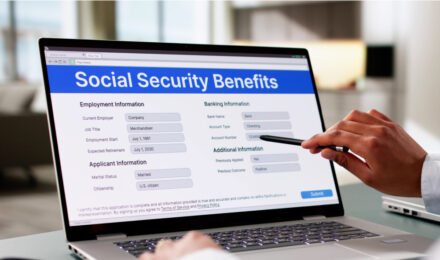Table of Contents
When sudden expenses overwhelm your budget—a car breakdown, medical bill or job loss—finding immediate cash can feel impossible. Emergency cash assistance programs bridge that gap, offering short-term relief to cover essentials like rent, utilities and food. This guide walks you through the key resources—government, nonprofit and community-based—that deliver rapid support when you need it most.
Understanding Emergency Cash Assistance
Emergency cash assistance provides one-time or short-term grants to help individuals and families survive financial shock. Unlike loans, these grants do not require repayment. Eligibility often hinges on factors such as income level, household composition, circumstances of hardship and local funding availability. Typical uses include:
- Covering rent or mortgage payments to avoid eviction
- Paying utility bills to prevent shutoffs
- Obtaining food, prescription medications or medical care
- Securing temporary shelter or transportation
Programs vary by state and locality, so it’s crucial to explore multiple channels to maximize your chances of receiving help quickly.
Government Programs
Temporary Assistance for Needy Families (TANF)
TANF provides cash grants to low-income families with children. Administered by each state, it encourages self-sufficiency through employment services and job training. Average benefits range widely; for example, the national average TANF grant was approximately $447 per month in 2024 Low Income Relief. To apply, contact your state’s human services or social services agency—application details vary by jurisdiction.
Supplemental Nutrition Assistance Program (SNAP)
SNAP (formerly food stamps) delivers monthly benefits on an Electronic Benefit Transfer (EBT) card, usable for groceries. While primarily a food support program, SNAP frees up household cash for other essentials. Eligibility is based on income, assets and household size. Most states offer online pre-screening tools and expedited emergency SNAP benefits for households with little or no income USAGov.
Low Income Home Energy Assistance Program (LIHEAP)
LIHEAP grants help cover heating and cooling costs. During utility crises or extreme weather, emergency crisis components of LIHEAP can provide additional cash assistance or vendor payments directly to utility companies. Contact your local LIHEAP office early in winter or summer seasons to start an application USAGov.
Unemployment Insurance (UI) and Disaster Assistance
If job loss triggers financial distress, UI benefits provide weekly cash payments for eligible workers. Additionally, in federally declared disasters, FEMA’s Individuals and Households Program (IHP) can furnish direct grants to cover housing, transportation and other urgent needs within disaster-declared counties. Apply for FEMA assistance online or by phone after a presidential disaster declaration.
Nonprofit and Charitable Organizations
Beyond federal programs, dozens of nonprofit agencies and faith-based charities distribute emergency cash or vouchers:
United Way and 211
United Way chapters nationwide manage 211, a free helpline that connects callers to localized resources—rent, utilities, food banks and more. Dial 2-1-1 to be routed to your community’s service network; no eligibility criteria apply to call, though program qualifications vary locally Investopedia.
Salvation Army
The Salvation Army operates emergency assistance centers in most communities, offering limited cash grants or vouchers for utility bills, rent and prescription costs. Funds are case-managed and availability fluctuates. Call your local corps office directly or search “Salvation Army emergency assistance” online to find contact details Need Help Paying Bills.
Catholic Charities and Other Faith-Based Agencies
Catholic Charities, Lutheran Social Services and St. Vincent de Paul societies often provide small cash grants or vouchers for basic needs. Eligibility may require proof of hardship and residency. Reach out to your nearest office or visit their websites for walk-in or appointment-based services.
Community Action Agencies
Funded through the federal Community Services Block Grant (CSBG), local Community Action Agencies (CAAs) deliver emergency assistance programs ranging from LIHEAP distribution to car repair grants and job training subsidies. Each CAA tailors services to local priorities and funding levels—search online for “[Your County] Community Action Agency” to locate services in your area.
Applying for Assistance: Tips for Success
- Gather Documentation
- Photo ID, Social Security numbers, proof of income or unemployment
- Utility shut-off notices, eviction warnings or medical bills
- Lease or mortgage statements to confirm residency
- Apply Early and Widely
- Emergency funds often deplete quickly; submit applications promptly
- Contact multiple organizations simultaneously to increase odds
- Follow Up Persistently
- Note application dates, reference numbers and caseworkers’ names
- If denied, request reasons in writing and ask about appeal processes
- Leverage Online Portals
- Many states offer electronic applications for TANF, SNAP, LIHEAP and UI
- Nonprofits often provide online inquiry forms that expedite eligibility checks
Additional Online Resources
- Benefits.gov: Centralized directory of federal and state benefit programs; includes pre-screening questionnaires and application links.
- National Relief Programs: Comprehensive listings of hardship grants for individuals facing medical, housing or utility emergenciesNational Relief Program.
- Need Help Paying Bills?: Curated database of local charities, 211 centers and community resources by ZIP code.
Conclusion
No one should face a financial emergency alone. From government safety nets to faith-based charities and community agencies, a network of cash assistance programs stands ready to offer immediate relief. By understanding eligibility requirements, preparing documentation and applying proactively across multiple channels, you can secure the funds needed to weather a crisis and regain stability.
References
- Learn how to apply for government programs, including SNAP, TANF and LIHEAP: U.S. Government Services USAGov
- Six leading organizations offering emergency financial assistance across the U.S.: NonprofitPoint Nonprofit Point
- Dial 211 for referrals to local emergency aid and community services: Investopedia Investopedia
Table of Contents
When sudden expenses overwhelm your budget—a car breakdown, medical bill or job loss—finding immediate cash can feel impossible. Emergency cash assistance programs bridge that gap, offering short-term relief to cover essentials like rent, utilities and food. This guide walks you through the key resources—government, nonprofit and community-based—that deliver rapid support when you need it most.
Understanding Emergency Cash Assistance
Emergency cash assistance provides one-time or short-term grants to help individuals and families survive financial shock. Unlike loans, these grants do not require repayment. Eligibility often hinges on factors such as income level, household composition, circumstances of hardship and local funding availability. Typical uses include:
- Covering rent or mortgage payments to avoid eviction
- Paying utility bills to prevent shutoffs
- Obtaining food, prescription medications or medical care
- Securing temporary shelter or transportation
Programs vary by state and locality, so it’s crucial to explore multiple channels to maximize your chances of receiving help quickly.
Government Programs
Temporary Assistance for Needy Families (TANF)
TANF provides cash grants to low-income families with children. Administered by each state, it encourages self-sufficiency through employment services and job training. Average benefits range widely; for example, the national average TANF grant was approximately $447 per month in 2024 Low Income Relief. To apply, contact your state’s human services or social services agency—application details vary by jurisdiction.
Supplemental Nutrition Assistance Program (SNAP)
SNAP (formerly food stamps) delivers monthly benefits on an Electronic Benefit Transfer (EBT) card, usable for groceries. While primarily a food support program, SNAP frees up household cash for other essentials. Eligibility is based on income, assets and household size. Most states offer online pre-screening tools and expedited emergency SNAP benefits for households with little or no income USAGov.
Low Income Home Energy Assistance Program (LIHEAP)
LIHEAP grants help cover heating and cooling costs. During utility crises or extreme weather, emergency crisis components of LIHEAP can provide additional cash assistance or vendor payments directly to utility companies. Contact your local LIHEAP office early in winter or summer seasons to start an application USAGov.
Unemployment Insurance (UI) and Disaster Assistance
If job loss triggers financial distress, UI benefits provide weekly cash payments for eligible workers. Additionally, in federally declared disasters, FEMA’s Individuals and Households Program (IHP) can furnish direct grants to cover housing, transportation and other urgent needs within disaster-declared counties. Apply for FEMA assistance online or by phone after a presidential disaster declaration.
Nonprofit and Charitable Organizations
Beyond federal programs, dozens of nonprofit agencies and faith-based charities distribute emergency cash or vouchers:
United Way and 211
United Way chapters nationwide manage 211, a free helpline that connects callers to localized resources—rent, utilities, food banks and more. Dial 2-1-1 to be routed to your community’s service network; no eligibility criteria apply to call, though program qualifications vary locally Investopedia.
Salvation Army
The Salvation Army operates emergency assistance centers in most communities, offering limited cash grants or vouchers for utility bills, rent and prescription costs. Funds are case-managed and availability fluctuates. Call your local corps office directly or search “Salvation Army emergency assistance” online to find contact details Need Help Paying Bills.
Catholic Charities and Other Faith-Based Agencies
Catholic Charities, Lutheran Social Services and St. Vincent de Paul societies often provide small cash grants or vouchers for basic needs. Eligibility may require proof of hardship and residency. Reach out to your nearest office or visit their websites for walk-in or appointment-based services.
Community Action Agencies
Funded through the federal Community Services Block Grant (CSBG), local Community Action Agencies (CAAs) deliver emergency assistance programs ranging from LIHEAP distribution to car repair grants and job training subsidies. Each CAA tailors services to local priorities and funding levels—search online for “[Your County] Community Action Agency” to locate services in your area.
Applying for Assistance: Tips for Success
- Gather Documentation
- Photo ID, Social Security numbers, proof of income or unemployment
- Utility shut-off notices, eviction warnings or medical bills
- Lease or mortgage statements to confirm residency
- Apply Early and Widely
- Emergency funds often deplete quickly; submit applications promptly
- Contact multiple organizations simultaneously to increase odds
- Follow Up Persistently
- Note application dates, reference numbers and caseworkers’ names
- If denied, request reasons in writing and ask about appeal processes
- Leverage Online Portals
- Many states offer electronic applications for TANF, SNAP, LIHEAP and UI
- Nonprofits often provide online inquiry forms that expedite eligibility checks
Additional Online Resources
- Benefits.gov: Centralized directory of federal and state benefit programs; includes pre-screening questionnaires and application links.
- National Relief Programs: Comprehensive listings of hardship grants for individuals facing medical, housing or utility emergenciesNational Relief Program.
- Need Help Paying Bills?: Curated database of local charities, 211 centers and community resources by ZIP code.
Conclusion
No one should face a financial emergency alone. From government safety nets to faith-based charities and community agencies, a network of cash assistance programs stands ready to offer immediate relief. By understanding eligibility requirements, preparing documentation and applying proactively across multiple channels, you can secure the funds needed to weather a crisis and regain stability.
References
- Learn how to apply for government programs, including SNAP, TANF and LIHEAP: U.S. Government Services USAGov
- Six leading organizations offering emergency financial assistance across the U.S.: NonprofitPoint Nonprofit Point
- Dial 211 for referrals to local emergency aid and community services: Investopedia Investopedia







